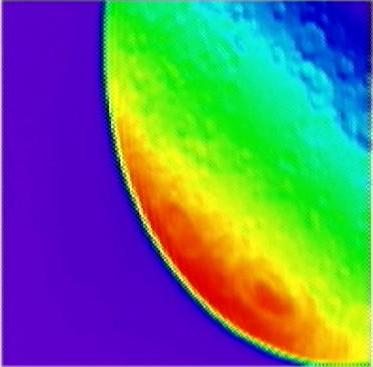New research from geophysical scientist Junjun Zhang and colleagues at Origins Lab at the University of Chicago, suggests that the giant impact hypothes of the creation of the Moon might be wrong. The team found that in comparing titanium isotopes from both the moon and the Earth, that the match is too close to support the theory that the moon could have been made partly of material from another planet.
According to the giant impact hypothesis, there was once a Mars-sized body referred to as Theia orbiting in our solar system. Theia would have formed in about the same orbit as Earth, but about 60° ahead or behind. When the protoplanet had grown to be about the size of Mars, its size made it too heavy for its orbit to remain stable. As a result, its angular distance from Earth varied increasingly, until it finally it crashed into the Earth.
The collision would have occurred 4.533 billion years ago when Theia would have hit the Earth at an oblique angle, and destroyed itself in the process. Theia’s mantle and a significant portion of the Earth’s silicate mantle were thrust into space. The left over materials from Theia mixed with the materials from the Earth and eventually formed the Moon. Read more here>>>
;
;
l
;
Source: Daily Galaxy




What's been said:
Discussions found on the web: